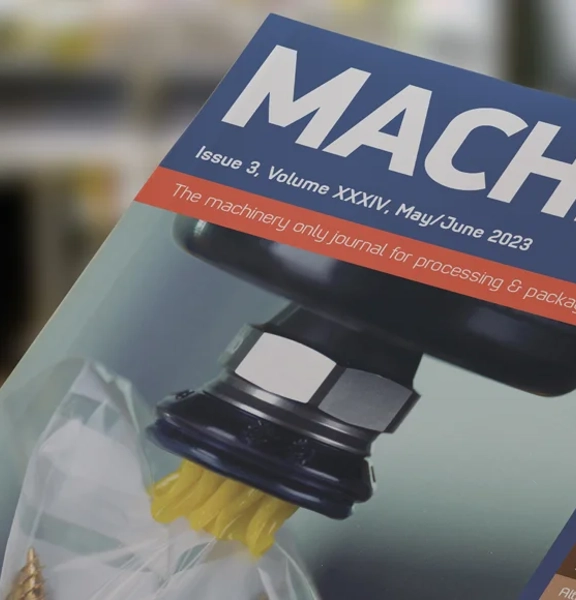Become a member
Take advantage of exclusive member benefits, world class events, networking and specialist support








 Become a member
Become a member 

Identify Direct / Machine Vision Technology have developed a system to solve a long-standing problem at a vinyl flooring manufacturer. Once finalised and put into action in the factory, the payback for the customer was measured in months rather than years! This meant it was a complete ‘no-brainer’ for them to order a second system for their other production line.

The Product
The vinyl wood-effect floor is a laminate, typically of seven layers. All the layers are laminated under pressure and heat. The continuous ‘web’ of material is cut into ‘slabs’ and later cut into strips to simulate floorboards.
The Problem
The lamination is a continuous process: when each roll runs out, a fresh roll is spliced onto the end by overlapping and taping to create a ‘spliced joint’, creating extra thickness with two problems:
1. a cosmetic defect (a ridge or bump) when the flooring is laid on the ground.
2. it can get stuck between rollers which flatten and anneal the material or, worse still, it can burst the rollers causing expensive downtime and requiring expensive parts which need replacing.
Our system was to detect these joints (defects) in the web and track them to the point they become part of a slab, track the slab and reject the defect. Originally these slabs were removed by an operator, however, human error meant the defect often went unnoticed, causing customer complaints or costly breakdowns. A variety of systems had been trialled, but none proved reliable enough to detect all the defects consistently.
The Solution
Identify Direct / Machine Vision Technology developed a solution which uses a sensitive infrared camera to continually capture images of the moving ‘web’. The material, having just been laminated, is hot, and the thicker taped seam remains very marginally hotter.
We developed a system deploying an industrial infra-red camera from Flir to capture images of the moving web at the full frame rate of the camera and analysing them in real time with a custom application using image processing tools from the Halcon library from MvTec Germany. The presence of the seam is detected as a bright (hot) band in the image. To deal with changes in ambient temperatures in the factory and the product, the camera was set to continuously adjust its range, making setting a threshold very challenging. Therefore, the MvTec software was used to develop a ‘dynamic threshold’ tool to pick out the hotter regions and then categorise them into areas that looked like spliced joints and not just random hot-spots. This all culminated in an extremely robust vision solution with very few ‘false positives’.

The defect’s position on the web is recorded relative to the encoder count from the rollers on the conveyor. The PC outputs the precise time when the start and end of the defect passes by a given point to a PLC, which then tracks the defect and automatically controls a guillotine to cut the web just before and just after the seam. Once the seam is removed, the guillotine returns to its regular task of cutting the web into slabs. The system had a payback period of only a few months: a material saving from cutting just the seam out rather than throwing away the complete slab (as in the original method) and a labour-saving by automating this station.
